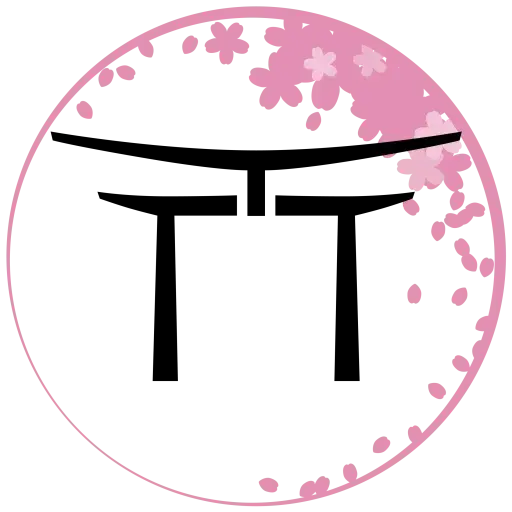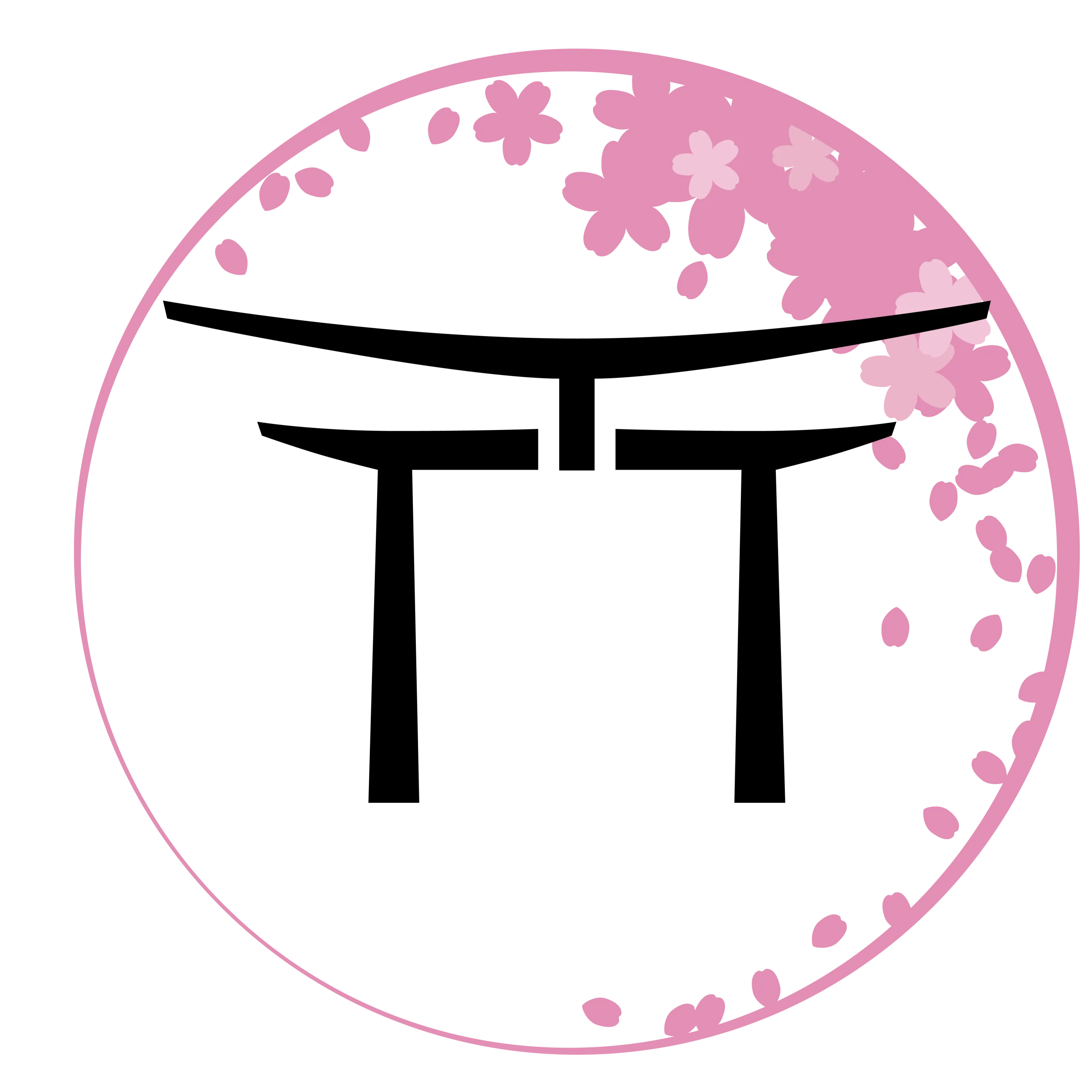Hells of Beppu Review: Are These Famous Onsen Worth Visiting?
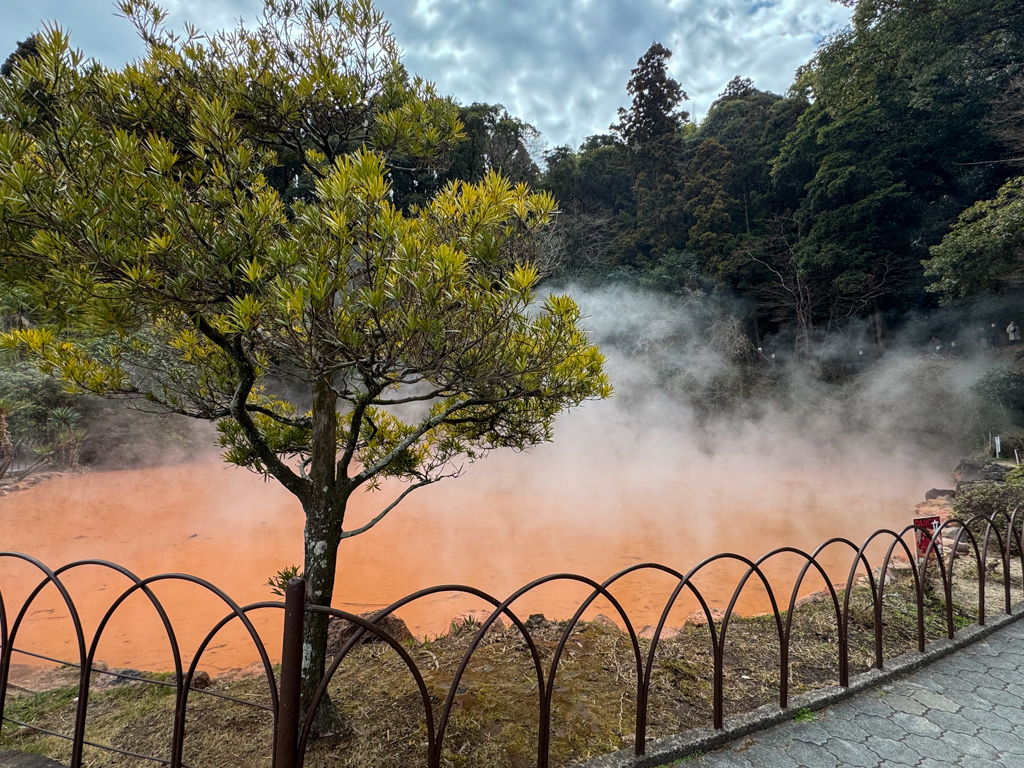
Last Updated on November 6, 2025 by Kay
This post may contain affiliate links, meaning I may earn a small commission on any purchases through those links at zero additional cost to you. Whatever I make goes to keeping this website running and I am forever grateful for the support. See my Privacy Policy for more information.
Beppu is a city located in Oita Prefecture that is renowned not only for being the onsen (hot spring) capital of Japan, but also for the Hells of Beppu. Called Beppu no Jigoku (別府の地獄) in Japanese, these “hells” consist of seven hot springs with unique mineral properties, and most are within walking distance of each other.
It takes about two to four hours to see all of these hot springs, but should you go all the way to Beppu to visit them? And if you do, are they all worth your time?
I’ve been to the Hells of Beppu twice already, so I thought I would share my honest thoughts on what it’s like to see these Jigoku and whether you should visit. This review also includes plenty of photos and my child’s experience at the Hells of Beppu.
Table of Contents
What to Know Before Visiting the Hells of Beppu
How to Get There
As mentioned earlier, the Hells of Beppu are easy to visit when you’re in the city. You can take a bus from the West Exit of Beppu Station. Look for Kamenoi Bus 2, 5, 24, or 41. Ride it for 20 minutes until you reach Umi Jigoku-Mae or Kannawa bus stop.
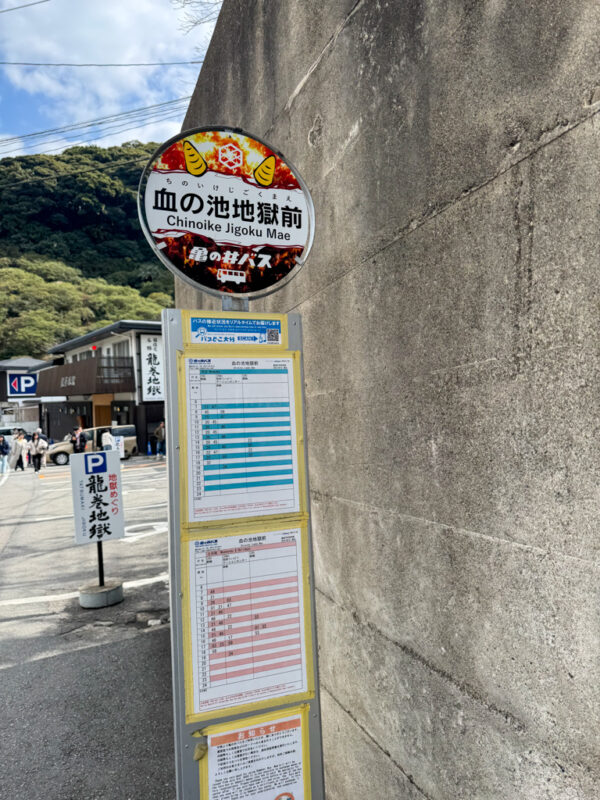
For our most recent trip, we drove to the Hells of Beppu. There’s free parking at all of the Hells, although five of them are within walking distance, so you don’t need to drive from one to another.
(And while you walk, you can find little goodies like these onsen-steamed veggies for sale!)
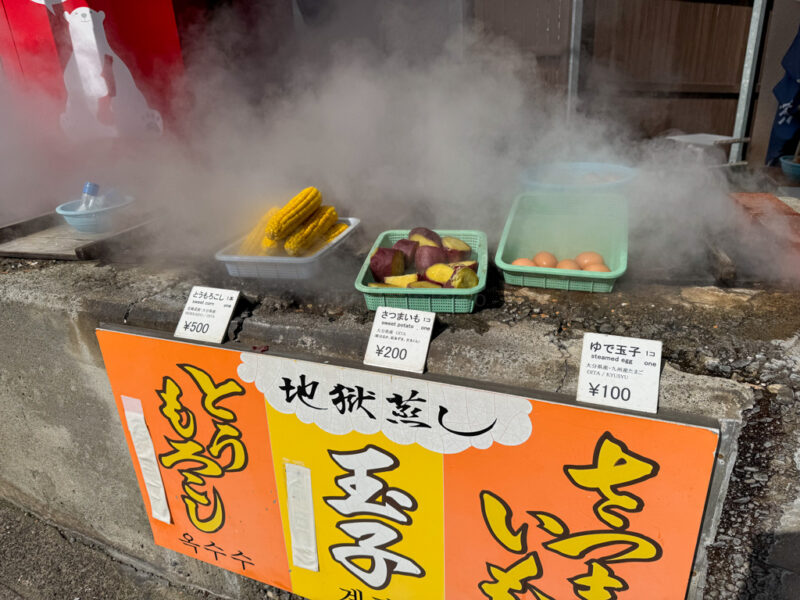
To make your trip smoother if you’re visiting by car, I recommend driving and then parking at the Umi Jigoku, the Shiraike Jigoku, and the Chinoike Jigoku.
Cost and Opening Hours
The Hells of Beppu are not free. You need a ticket to enter each Hell, which you can buy once you’re there and costs around 500 yen each. You can also purchase a ticket book for 2400 yen at the first Hell you visit, which contains tickets for all seven Hells (which is what we did), or purchase a ticket book online (make sure to print it before you go).
If you go to at least 5 Hells, buying a ticket book is the cheapest option.
Once you’ve used a ticket to enter a Hell, you cannot re-enter.
The Hells of Beppu are open from 8 AM to 5 PM daily.
Important Tips
It’s essential to note that you cannot bathe in the 7 Hells of Beppu. The onsen water at the Hells ranges from a scorching 78 to 105 degrees Celsius. These Hells are just for looking, although a few have footbaths (足湯), so make sure to bring a towel (although you can also buy one at souvenir shops).
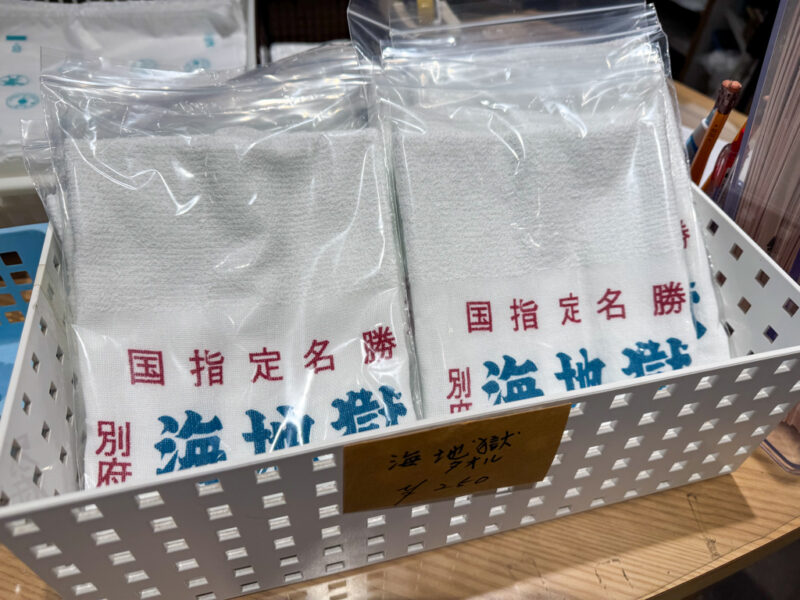
If you like collecting stamps, each Hell has a stamp corner, which you can stamp onto your pamphlet or a book if you have one.
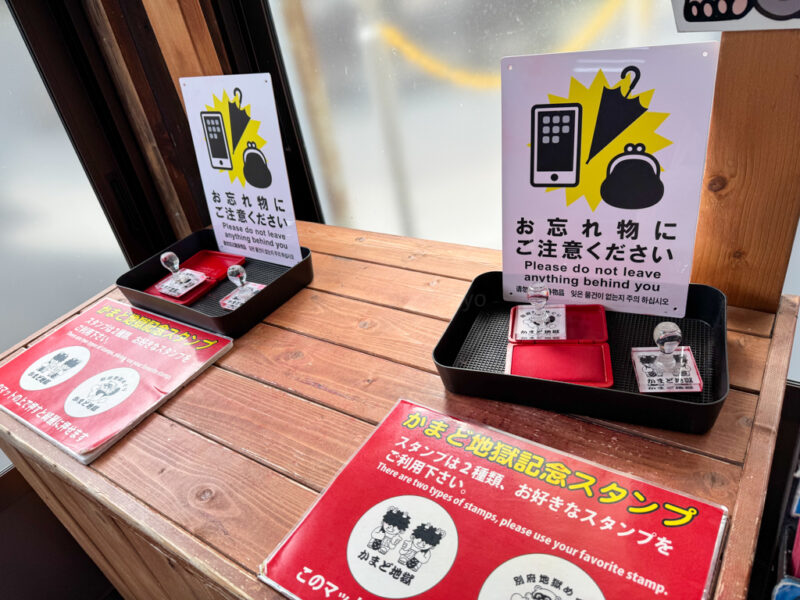

Below, I’ll introduce the 7 Hells of Beppu, starting with the Hells you’ll see following the most common route, and share my thoughts on what it was like. Generally (spoiler alert), the Hells are all interesting, but there are two I wouldn’t recommend visiting, which I’ll cover in this article.
There’s also a map near the end of the article showing where each Hell is located, so feel free to use it when planning your trip!
Kannawa Onsen Area
The Kannawa Onsen Area consists of five different Hells that are all within walking distance of each other. This area is closest to the Umijigoku-mae bus stop.
Oniishi Bozu Jigoku
The Oniishi Bozu Jigoku, which means Bald Demon Hell, consists of bubbling light grey mud. It’s fascinating to see the bubbles of mud pop, but I also liked how the area was similar to a Japanese garden.
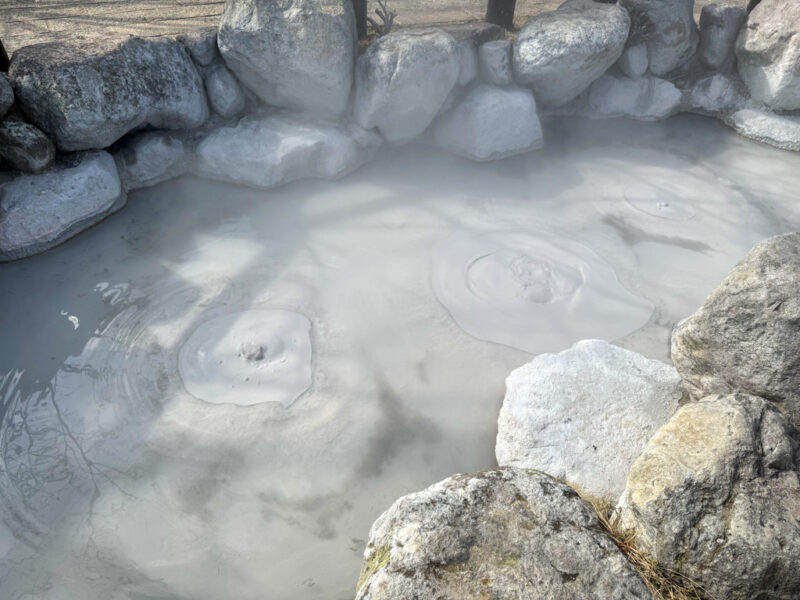

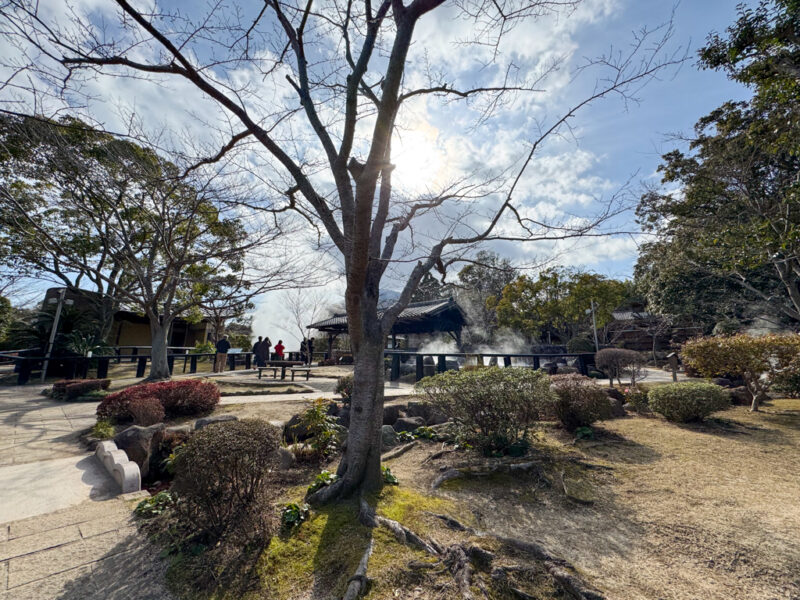
There’s also a geyser that sounds like a demon snoring (Oni no Takaibiki), but we didn’t really hear it.
My daughter (age five) was more interested in the steaming onsen water than the mud, which I suppose shouldn’t be surprising.
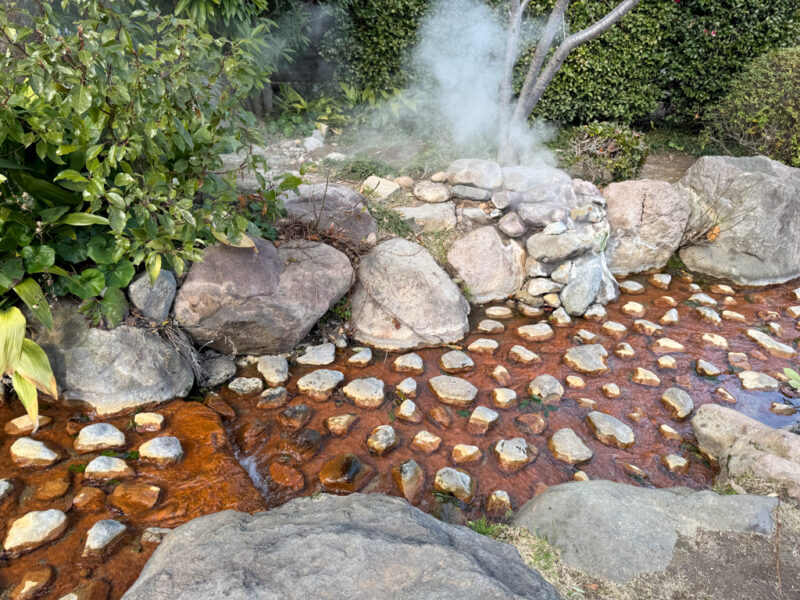
This Hell has a footbath, which we made sure to enjoy before heading to the next onsen. (Since the footbaths are all included in the entrance fee, I think that alone makes going to the Hells worth it!)

Umi Jigoku
The Umi Jigoku, which means Ocean Hell in English, is my personal favorite because I think it looks unbelievably beautiful. The water is this otherworldly turquoise blue that’s stunning to see.
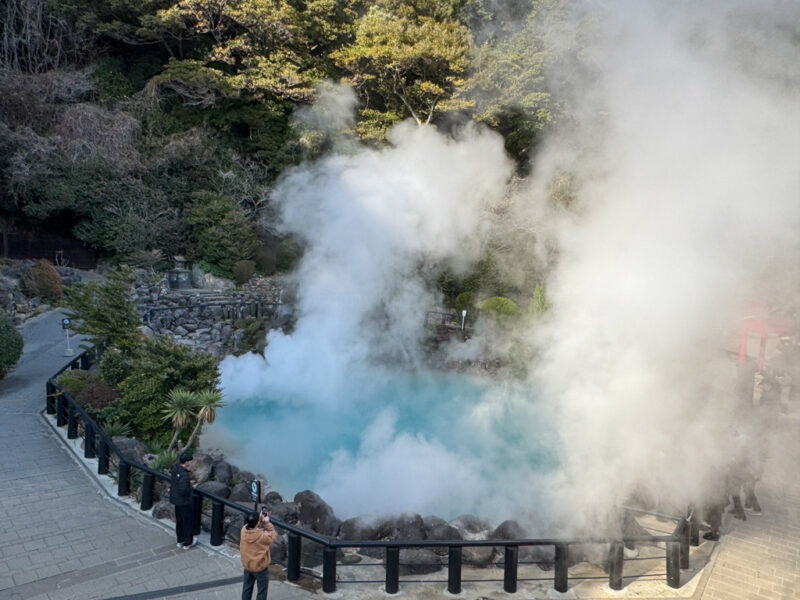
Sometimes the steam is so fierce that it completely engulfs the onsen, but if you wait a little bit, it will dissipate. (For the view of the onsen as pictured above, walk up to the second floor of the gift shop.)

Nearby, you’ll find a small shrine that you can walk up to.

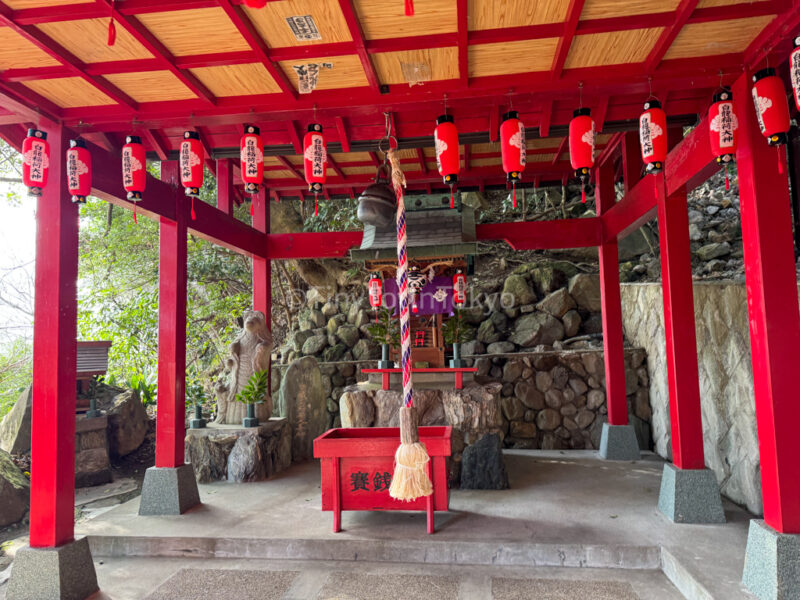
I also liked that there was a small red onsen, a mini-version of the Blood Hell (Chinoike Jigoku).
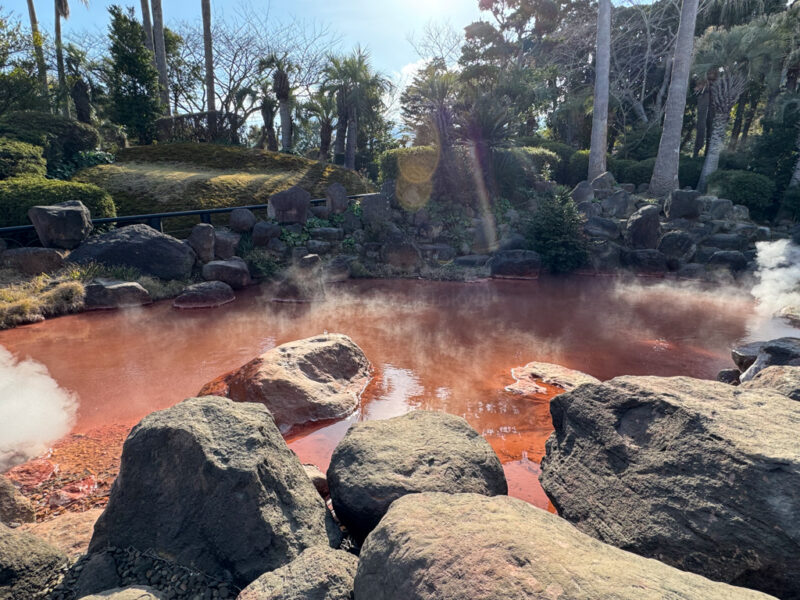
If you want souvenirs, this is the best place to get them. This gift shop has the widest selection of all the Hells.

It also offers blue beer to match the onsen, which I tried and enjoyed enough. To me, there was nothing particularly special about it other than the color, but I can never say no to a glass of beer.
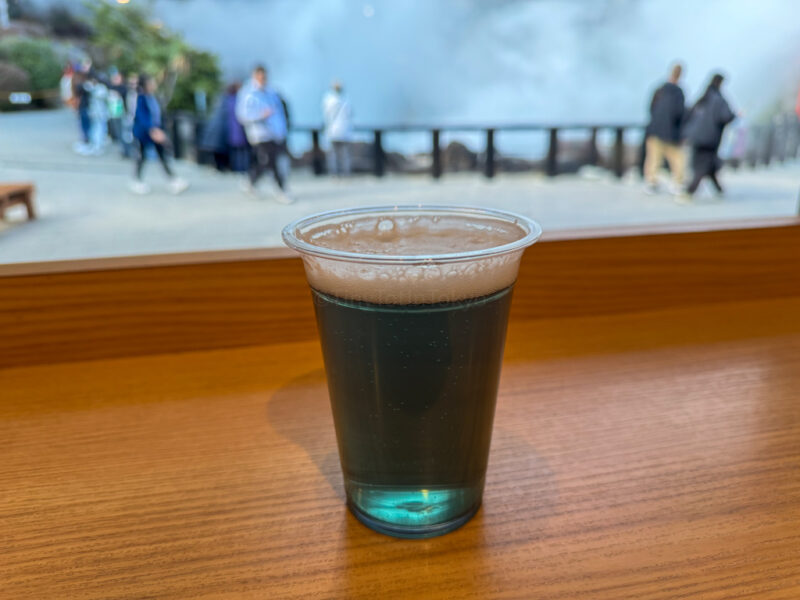
You can buy an onsen tamago from here as well to eat (an egg that’s been boiled in onsen water), which my daughter scarfed down.

The footbath here was also one of our favorites. It was spacious and beautiful.
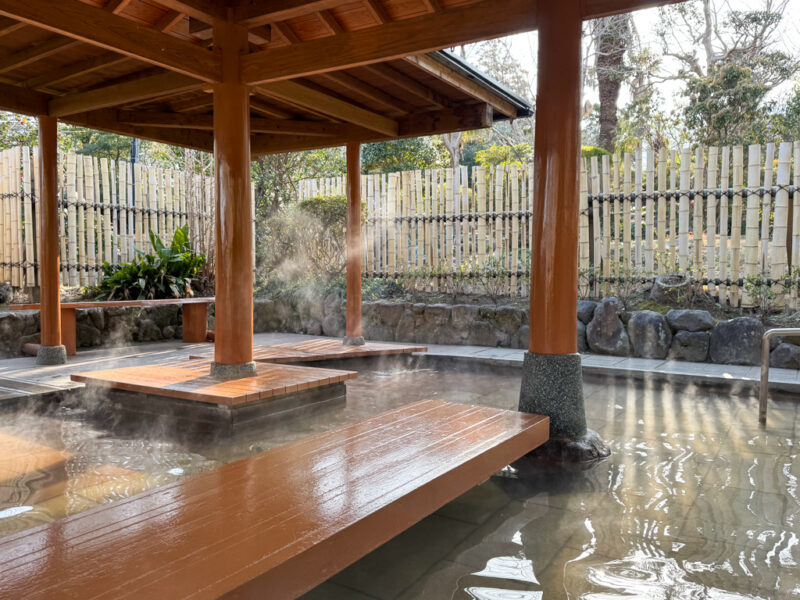
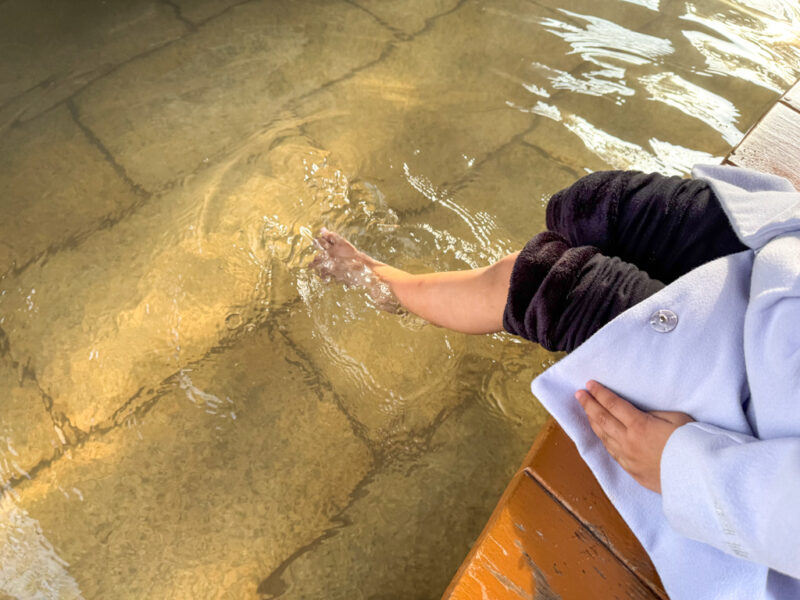
Overall, the Umi Jigoku is one of my top onsen to visit at the Hells of Beppu. There is plenty to see as well as eat, making it thoroughly enjoyable.
Kamado Jigoku

Kamado Jigoku has six little onsen, or districts, and is another favorite of mine. My daughter especially liked this Hell because there was so much to see!
However, when we went, it was really crowded because of a huge tour group. I wish we could have enjoyed it without so many people!
The first onsen consists of a muddy brown onsen that contains a variety of clay.
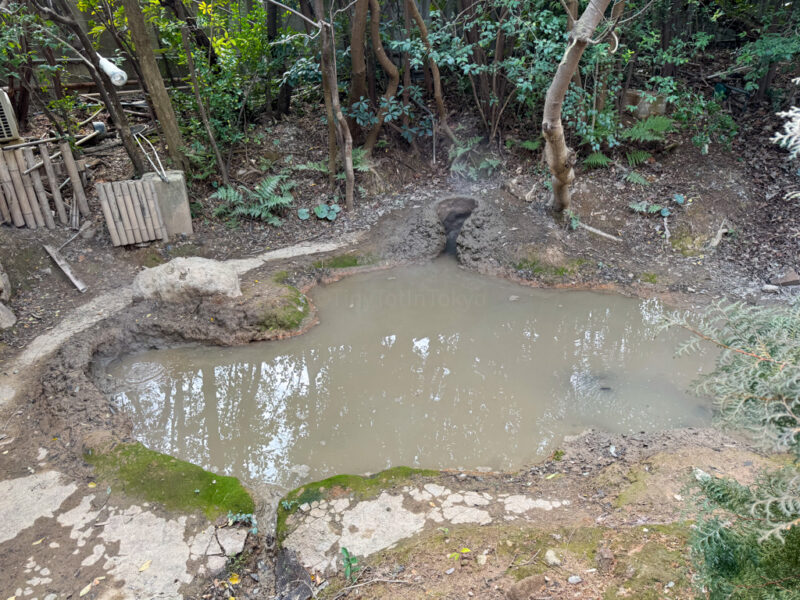
The second onsen has a famous demon statue that symbolizes Kamado Onsen, and steam spews from beneath it.
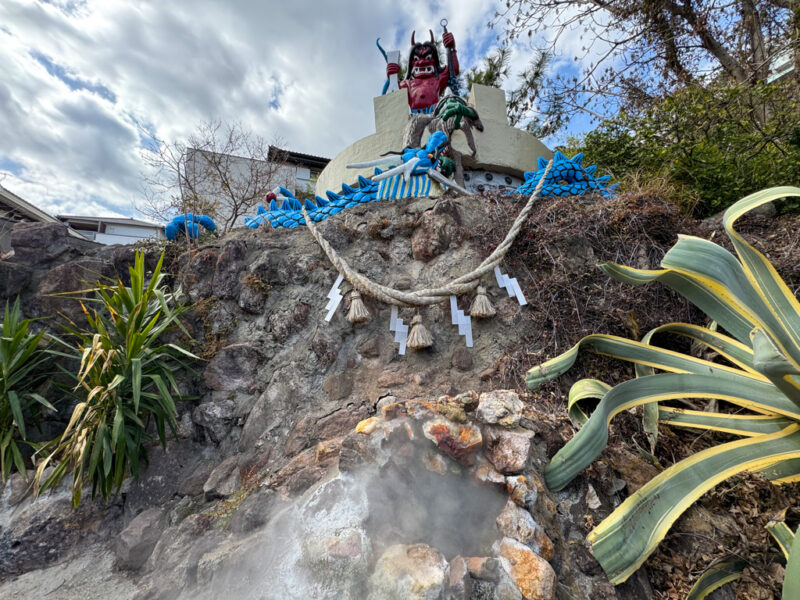
The third area has a small white-blue onsen that’s similar to the Umi Jigoku. This onsen is surrounded by white, snow-like mineral compounds called amorphous silica, which took over 70 years to form.
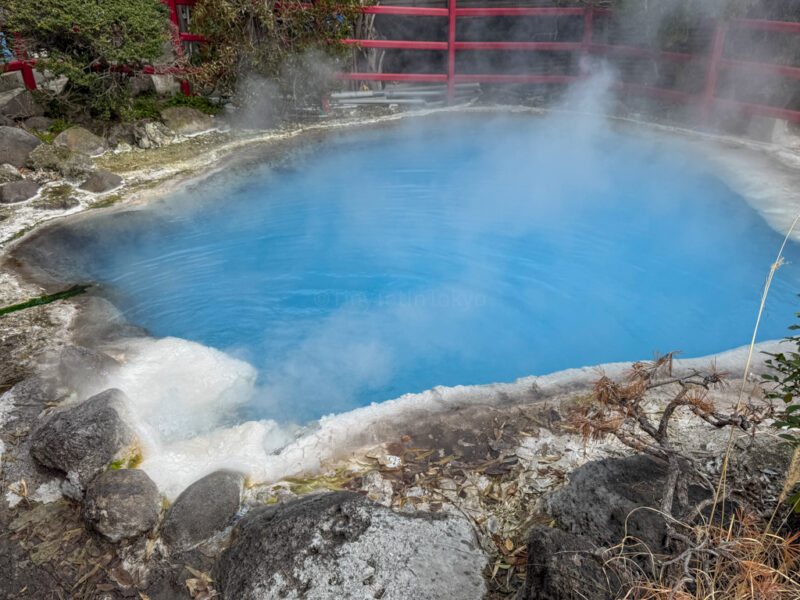
The fourth onsen offers hot spring water that you can drink for 10 yen (飲む温泉). (We couldn’t try it, unfortunately, because there were too many people.) The water is very hot, so be careful and don’t let children drink it unless you allow it to cool down significantly.

There are also onsen here to moisturize your skin (美肌) and throat (のど). Just place your hands and face over it to experience the benefits. (But don’t dangle your children over it, please.)

This area is also home to a bubbling onsen composed of thermal mud, similar to the one in the first area.
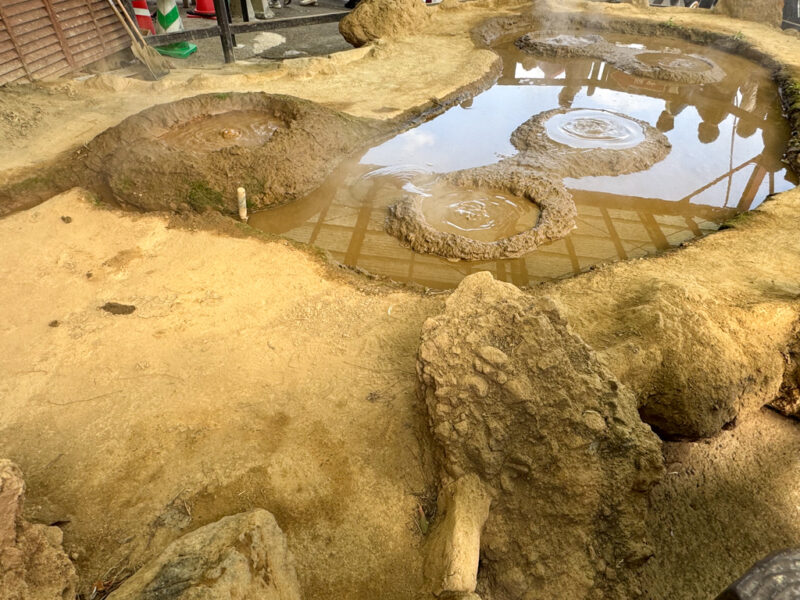
The fifth onsen also reminded me of the Umi Jigoku. The water’s color changes throughout the year. When we visited in March, it was a bright blue.
What’s particularly interesting about this onsen is that no one knows why it changes color!
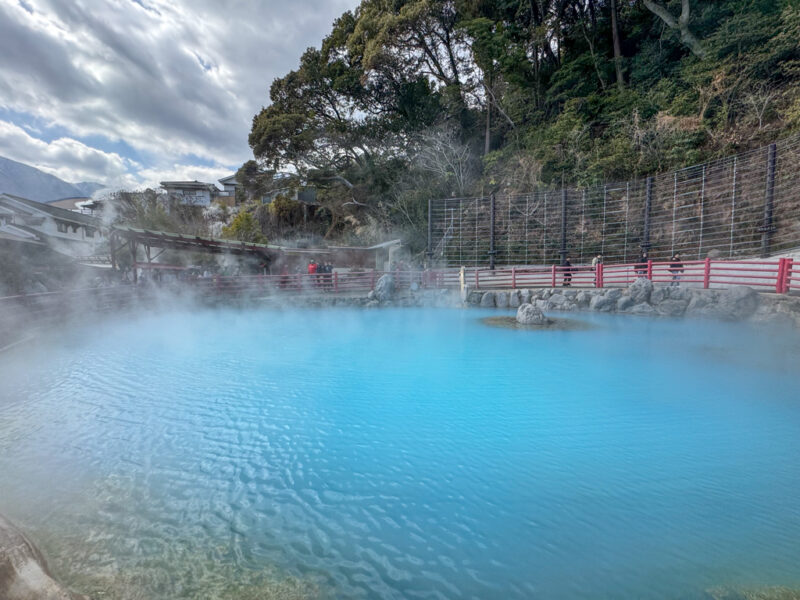
The sixth, and last, area in Kamado Jigoku has another thermal mud onsen. It was once grey but slowly became a brownish-red due to iron seeping into it.
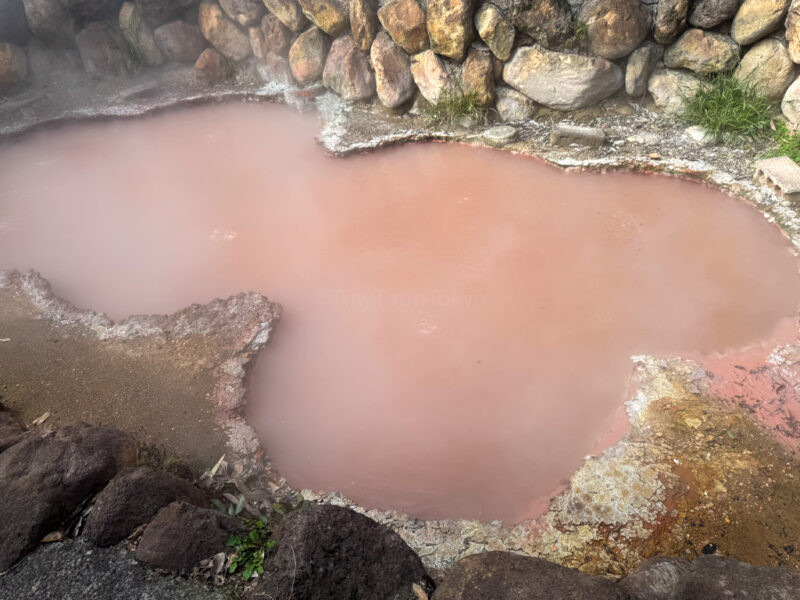
Sadly, we were unable to enjoy the footbath at the very end due to the crowds. I couldn’t even take a photo of it!
Oniyama Jigoku
Out of all the 7 Hells of Beppu, this one is the only one I would absolutely not recommend to anyone.
Oniyama means “Demon Mountain,” and I really felt it was appropriate because of all the crocodiles piled up on one another. I didn’t remember a thing about this Hell from the first time I visited (if I had, I wouldn’t have gone), but now I believe I pushed it out of my memory.

There are about seven dozen crocodiles here, some contained in small enclosures, and it just made me feel really sad to see them kept in such poor conditions. My daughter (age five at the time) loves animals, so it was tough for her to be there, and she wanted to leave as soon as possible.
Honestly, I’m tearing up just recalling the Crocodile Hell, so I’ll end this section here.
Shiraike Jigoku
Shiraike means “white pond,” although the onsen here has more of a milky light blue hue than white.

Nestled within a Japanese garden, the onsen itself is lovely, but what my daughter really enjoyed was the small aquarium attached to it. Here you can see tropical fish that are bred using the onsen water, including massive pirarucu.

Now, I will point out that unlike the Oniyama Jigoku, my daughter wasn’t phased by the conditions for the fish. However, the tanks are small, especially for the pirarucu, and the conditions could be better.
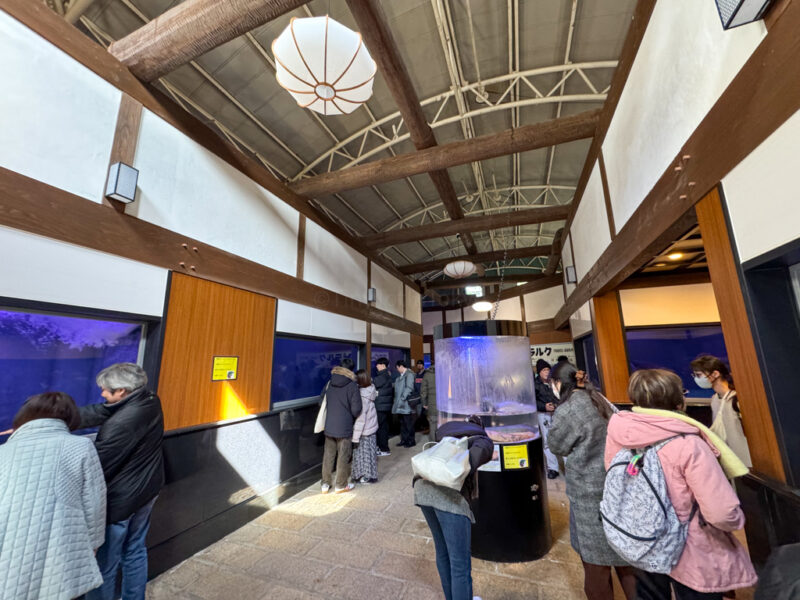
So, although my daughter liked it, I wouldn’t recommend this Hell to visitors from abroad.
Shibaseki Onsen
The two Hells located in this area are about a 5-minute drive away from the other onsen. You can also take a bus from Kannawa Bus Terminal to Chinoikejigoku-mae.
If you have a lot of stamina, you can walk, but it will take about 35 minutes.
Chinoike Jigoku
This is probably the most famous Hell of them all, and a must-visit. Chinoike in English means “Blood Pond” and given its color, it’s quite fitting. A bright red from boiling clay, this onsen dates back over 1300 years!
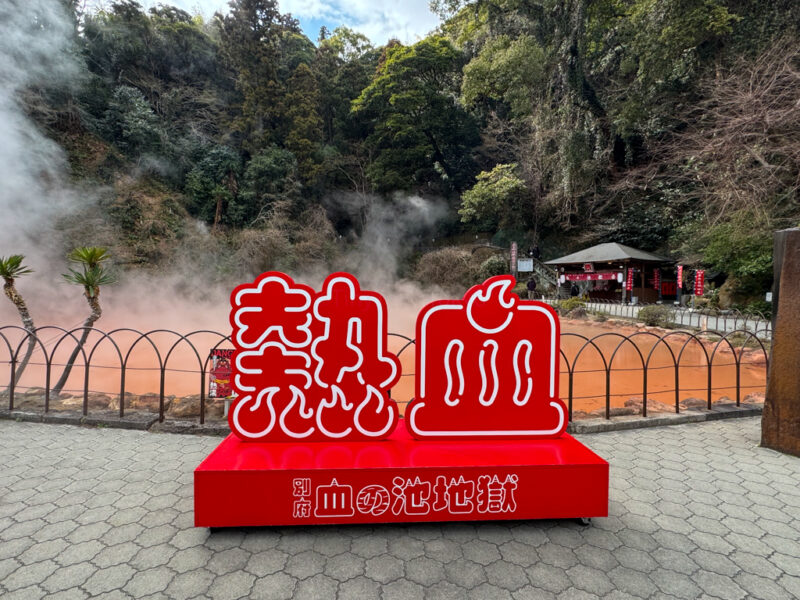
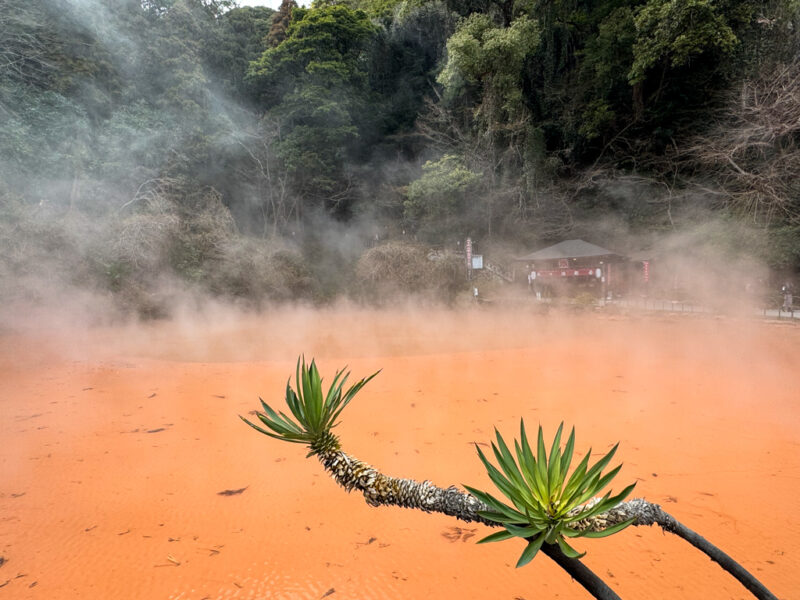
There are lots of fun photo spots here, too, featuring demons, which will be a hit with kids if they’re anything like mine.
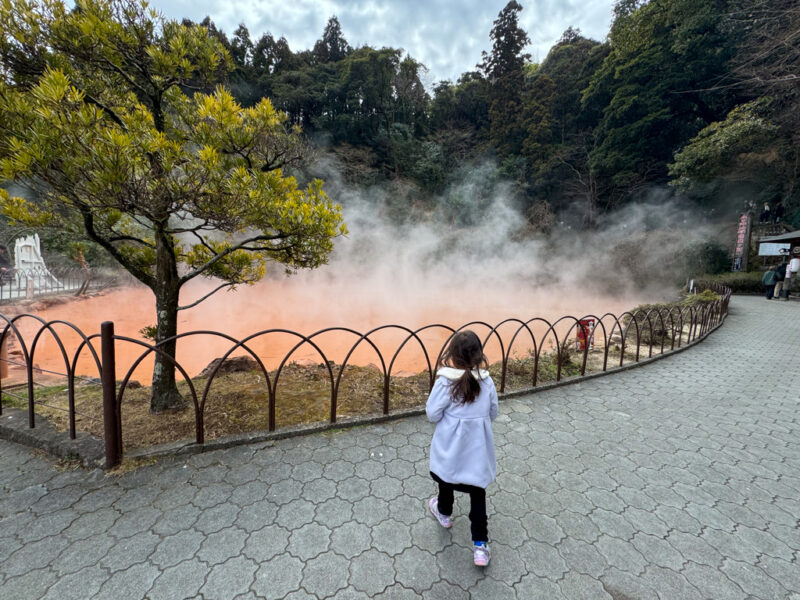

I found the demon-themed vending machines absolutely adorable!
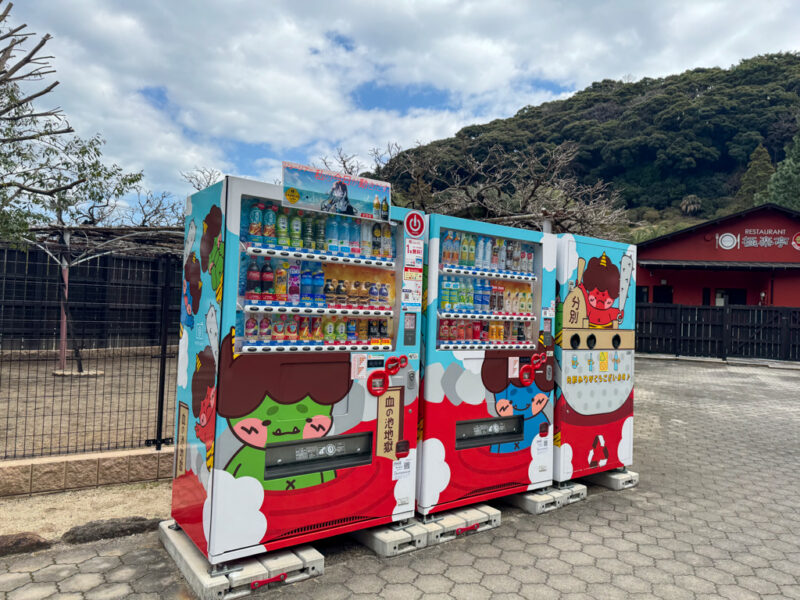
The footbath at the Chinoike Jigoku was also quite enjoyable, and not only because of its color!
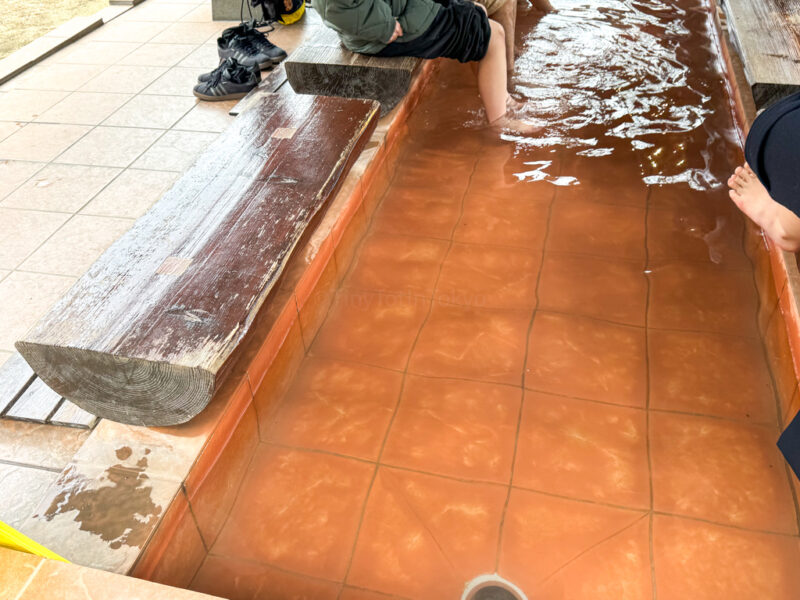
Tatsumaki Jigoku
This is the smallest Hell of them all. Tatsumaki means tornado, and the geyser at this Hell is reminiscent of one when it erupts. Eruptions occur once every 30 to 40 minutes.
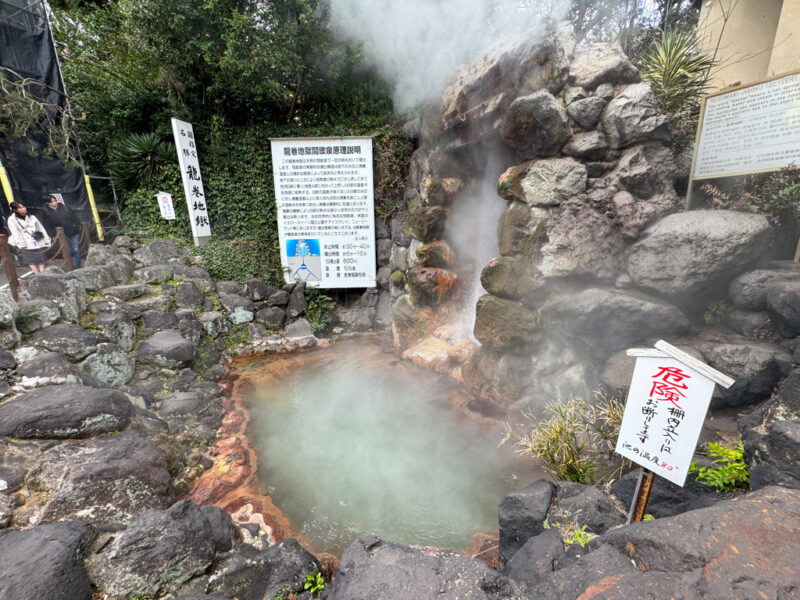
Honestly, this was okay, but I think it’s worth skipping if you don’t have the time.
7 Hells of Beppu Map
If you’re wondering where each of the seven Hells of Beppu is located, I’ve got you covered with this map. I’ve marked the Hells I do not recommend in red.
So Are Beppu’s Hells Worth It?
We spent about three hours visiting all seven Hells and we (generally) had a great time.
Although undoubtedly touristy, I’ve always enjoyed visiting the Hells, and I think five of the seven are absolutely worth visiting. Beppu also offers a lot to do and amazing food to eat, which is why it’s one of my favorite places to visit in Japan. (And I say this as someone who has lived here for almost two decades.)
Would I recommend going all the way to Beppu just to visit the Hells? Well, only if you have the budget and time for it. To make the most of your trip, I recommend staying a little longer in Beppu and experiencing everything Japan’s famous onsen town has to offer.
